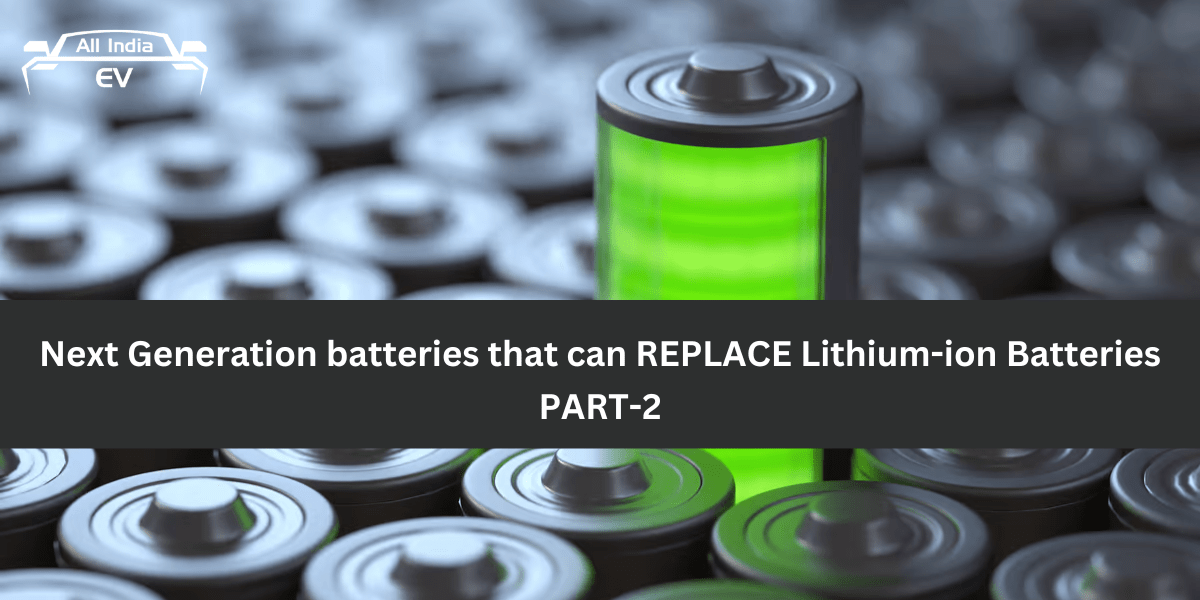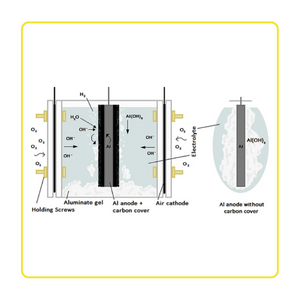Next Gen batteries that can replace lithium-ion batteries: Part 2

This is the 2nd part of the article where we are discussing the next generation batteries that can replace the lithium ion batteries.
Bioelectrochemical Batteries

Bioelectrochemical batteries are a type of rechargeable batteries that use living organisms or biological materials as the catalysts for the electrochemical reactions. Bioelectrochemical batteries have several advantages over lithium ion batteries, such as:
Renewable and Biodegradable: Bioelectrochemical batteries use renewable and biodegradable resources, such as bacteria, enzymes, or plants, which can reduce the dependence on fossil fuels and the environmental impact of battery disposal.
Self-regenerating and Adaptive: Bioelectrochemical batteries can regenerate and adapt themselves to changing conditions, such as temperature, pH, or substrate concentration, which can improve the performance and lifespan of the device.
Diverse and Versatile: Bioelectrochemical batteries can utilize a wide range of organic and inorganic substrates, such as glucose, wastewater, or carbon dioxide, which can expand the application scope and efficiency of the device.
Challenges with Bioelectrochemical Batteries
Low Power and Low Energy Density: Bioelectrochemical batteries have low power and energy density compared to lithium ion batteries, due to the limitations of the biological catalysts and the mass transport phenomena.
High Complexity and Variability: Bioelectrochemical batteries have high complexity and variability in their design and operation, due to the diversity and sensitivity of the biological components and the interactions with the environment.
Low Stability and Scalability: Bioelectrochemical batteries have low stability and scalability compared to lithium ion batteries, due to the challenges in maintaining the viability and activity of the biological components and integrating them with the device components.
Sodium Ion Batteries

Sodium ion batteries are a type of rechargeable batteries that use sodium ions as the charge carriers. Sodium ion batteries have several advantages over lithium ion batteries, such as:
Abundant and Cheap: Sodium ion batteries use sodium, which is one of the most abundant and cheap elements on Earth, which can reduce the cost and availability issues of battery materials.
Compatible and Flexible: Sodium ion batteries can use similar materials and structures as lithium ion batteries, which can facilitate the transition and adaptation of existing battery technologies and applications.
Safe and Stable: Sodium ion batteries have higher thermal stability and lower reactivity than lithium ion batteries, which can reduce the risk of fire or explosion.
Challenges with Sodium-ion Batteries
Low Capacity and Efficiency: Sodium ion batteries have lower capacity and efficiency than lithium ion batteries, due to the larger size and lower mobility of sodium ions compared to lithium ions.
Large Volume Change and Polarization: Sodium ion batteries experience large volume change and polarization during charging and discharging cycles, which can cause mechanical stress and resistance in the electrodes and electrolytes.
Poor Low-Temperature Performance: Sodium ion batteries have poor low-temperature performance compared to lithium ion batteries, due to the higher melting point and lower solubility of sodium salts in the electrolytes.
Aluminium Air Batteries

Aluminium air batteries are a type of primary (non-rechargeable) batteries that use aluminium metal as the anode and oxygen from the air as the cathode. Aluminium air batteries have several advantages over lithium ion batteries, such as:
High Energy Density: Aluminium air batteries have high energy density compared to lithium ion batteries, due to the high theoretical capacity of aluminium metal and the use of oxygen from the air as a free cathode material.
Simple and Lightweight: Aluminium air batteries have simple and lightweight design compared to lithium ion batteries, due to the elimination of heavy or complex components, such as cathode materials or separators.
Low Cost and Eco-Friendly: Aluminium air batteries have low cost and eco-friendly features compared to lithium ion batteries, due to the use of cheap and recyclable materials, such as aluminium and water.
Challenges with Aluminium Air Batteries
Non-Rechargeable: Aluminium air batteries are non-rechargeable compared to lithium ion batteries, which means they cannot be reused once they are depleted.
Low Power Density: Aluminium air batteries have low power density compared to lithium ion batteries, which means they cannot provide high power output for fast charging or high-performance applications.
Short Shelf Life: Aluminium air batteries have short shelf life compared to lithium ion batteries, due to the corrosion of aluminium anode by water or oxygen in the air.
Conclusion
In this blog, we have discussed some of the next generation battery technologies that can potentially replace lithium ion batteries in the future. Each of these technologies has its own advantages and disadvantages, depending on their characteristics, applications, and challenges. Therefore, it is important to evaluate them based on their specific requirements and trade-offs. As battery technology continues to evolve and improve, we can expect more innovations and breakthroughs that can enhance our energy storage capabilities.“`
